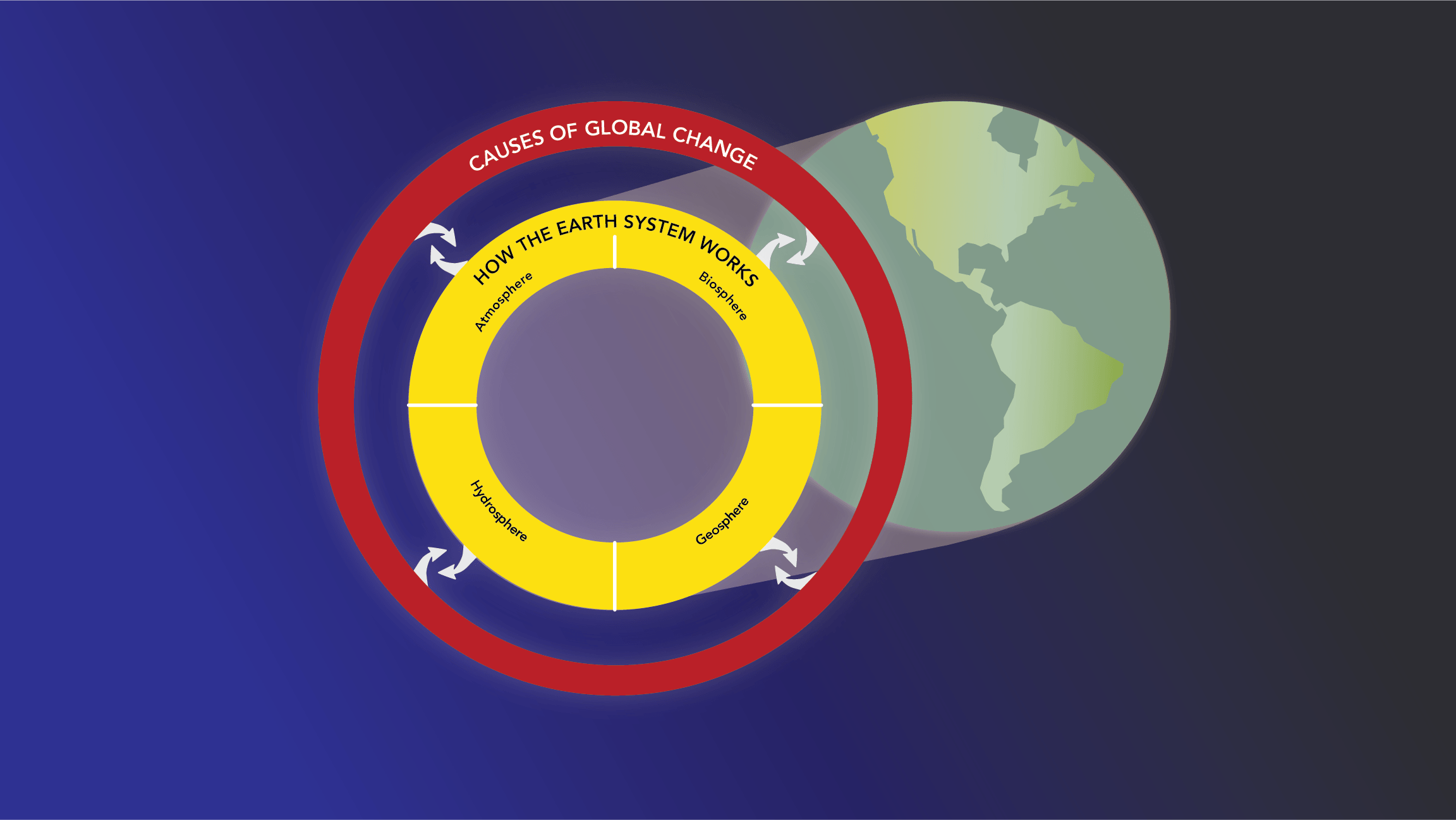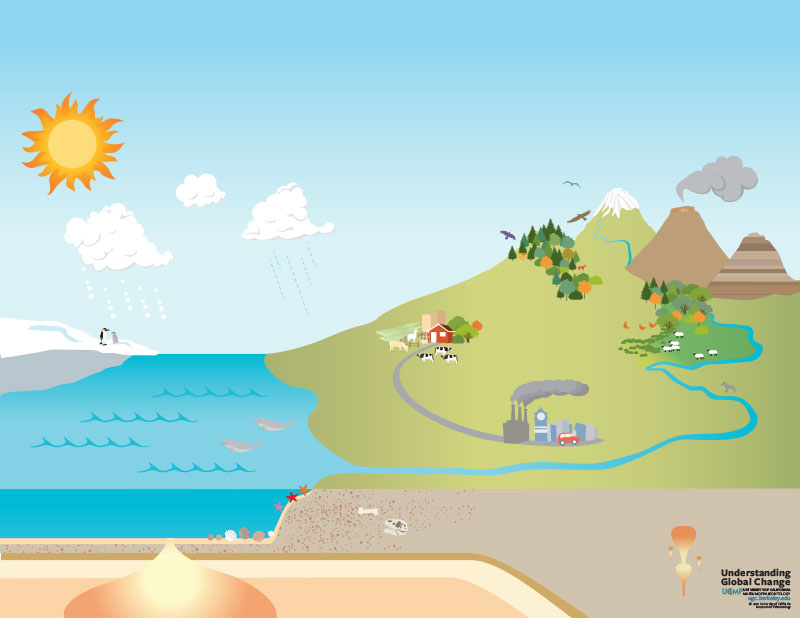When you go outside, what do you notice? Do you notice the smell of the air or feel the warmth of the Sun; see the clouds or blue sky; hear birds singing or trees moving in the wind; hear or see cars and people in the streets? The world is made up of many parts that interact to shape our everyday experiences. Many of the processes that determine how the world looks today have been happening for millions of years throughout the history of our planet. Recently, especially in the last 200 years, humans have caused many changes to Earth’s climate and ecosystems. To understand these changes, let's take a closer look at the parts of the Earth and how they interact to shape the world around us.
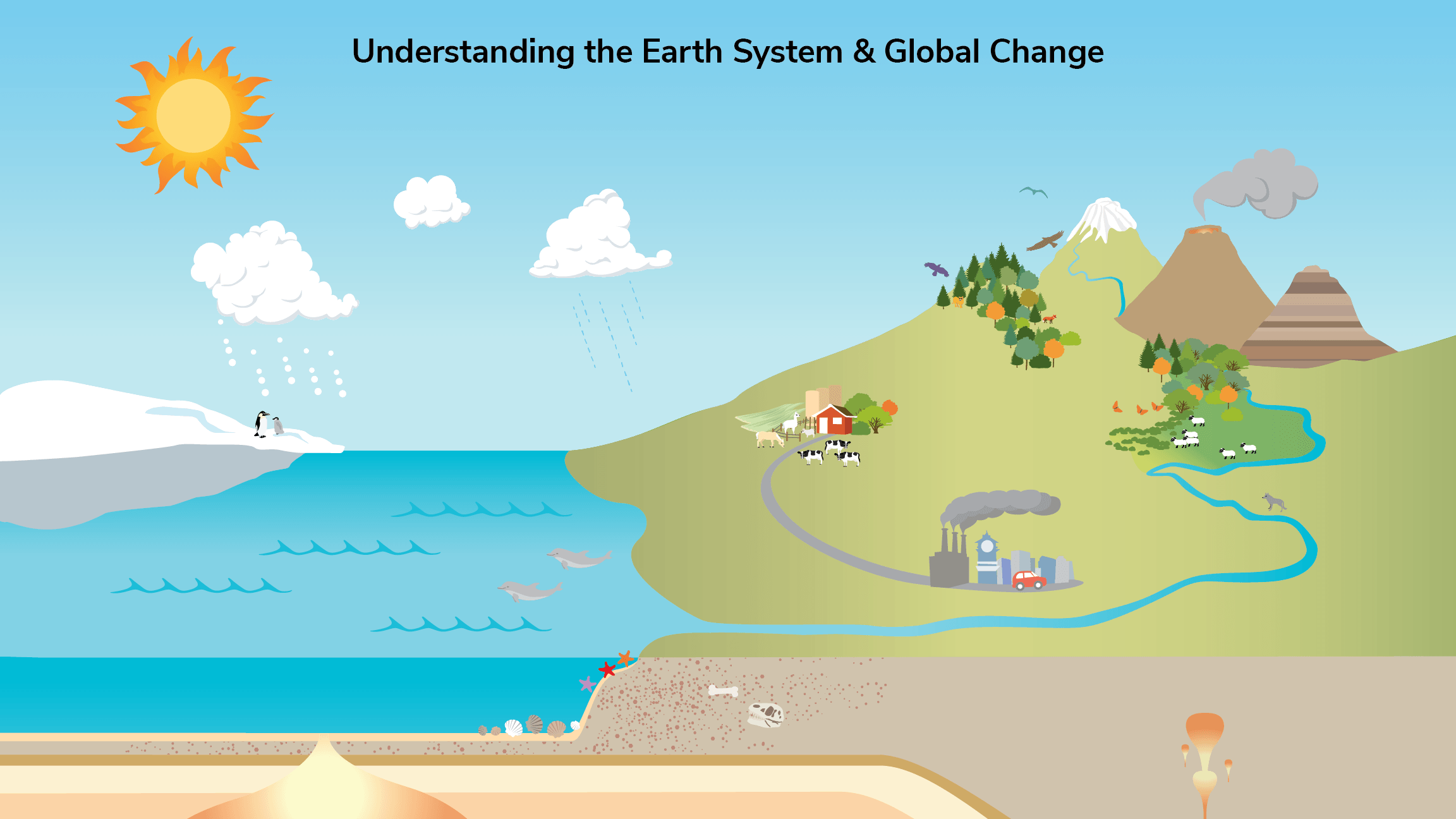
Our team of scientists and educators developed a way to organize the major components of the Earth system. Within our framework there are three primary categories: Causes of Global Change — the human activities and non-human phenomena that change the Earth system; How the Earth System Works — the major processes that shape the world around us; and Measurable Changes in the Earth System — the evidence (data) that indicate how fast (rate) and how much (magnitude) the world is changing. The Earth system consists of four major parts: the atmosphere (air), hydrosphere (water), geosphere (land), and biosphere (life). We will start our discussion of How the Earth System Works by exploring the four spheres.
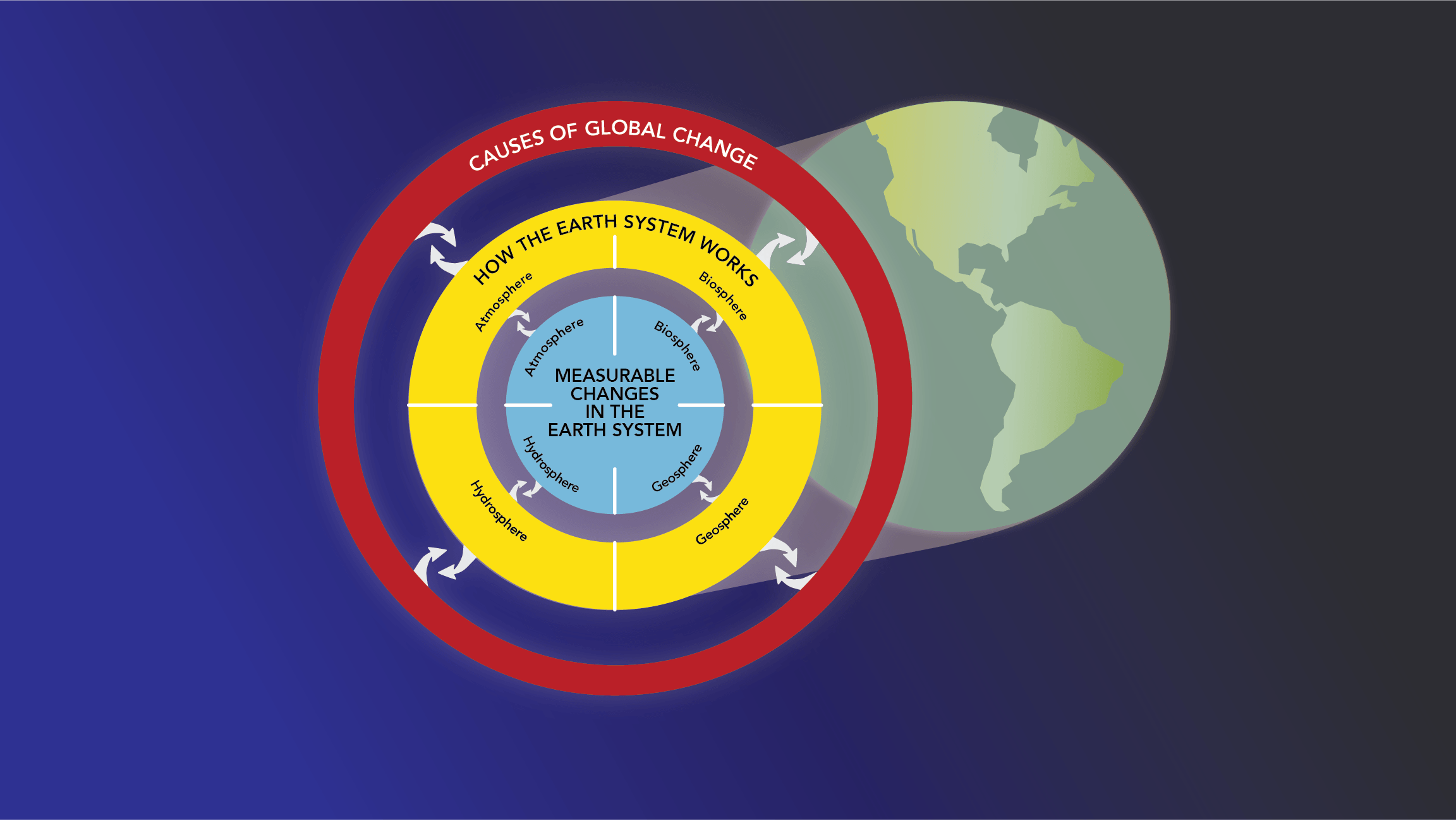
The Earth consists of four major parts: the atmosphere (air), hydrosphere (water), geosphere (land), and biosphere (life). First let's look at the atmosphere, the layer of air around the Earth. The air we breathe and the clouds that bring us rain are all part of the atmosphere.
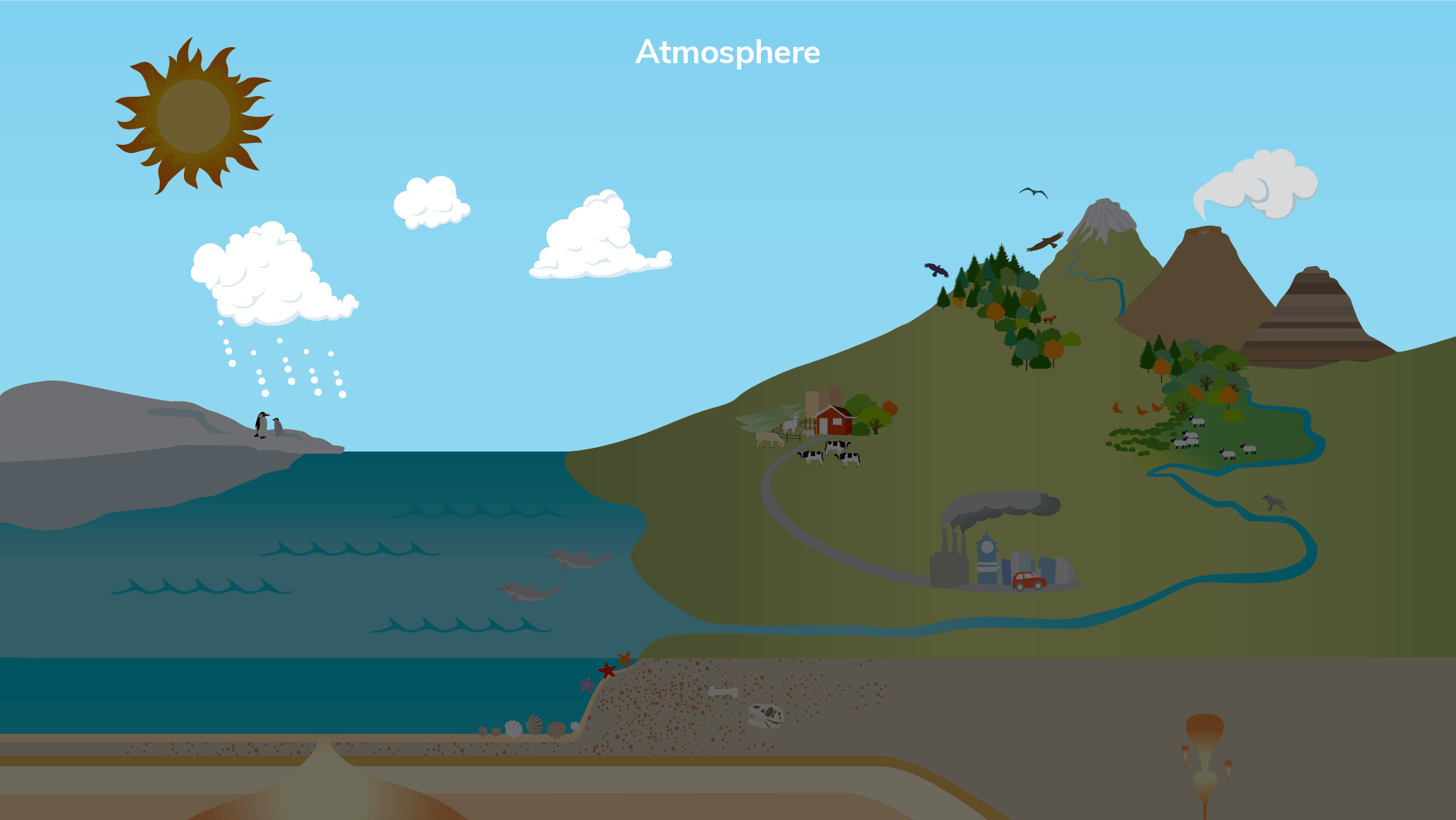
Let’s look at the hydrosphere, the parts of the Earth that have water as ice, liquid, and gas. Earth’s oceans, rivers, lakes, and the water we drink are all part of the hydrosphere.
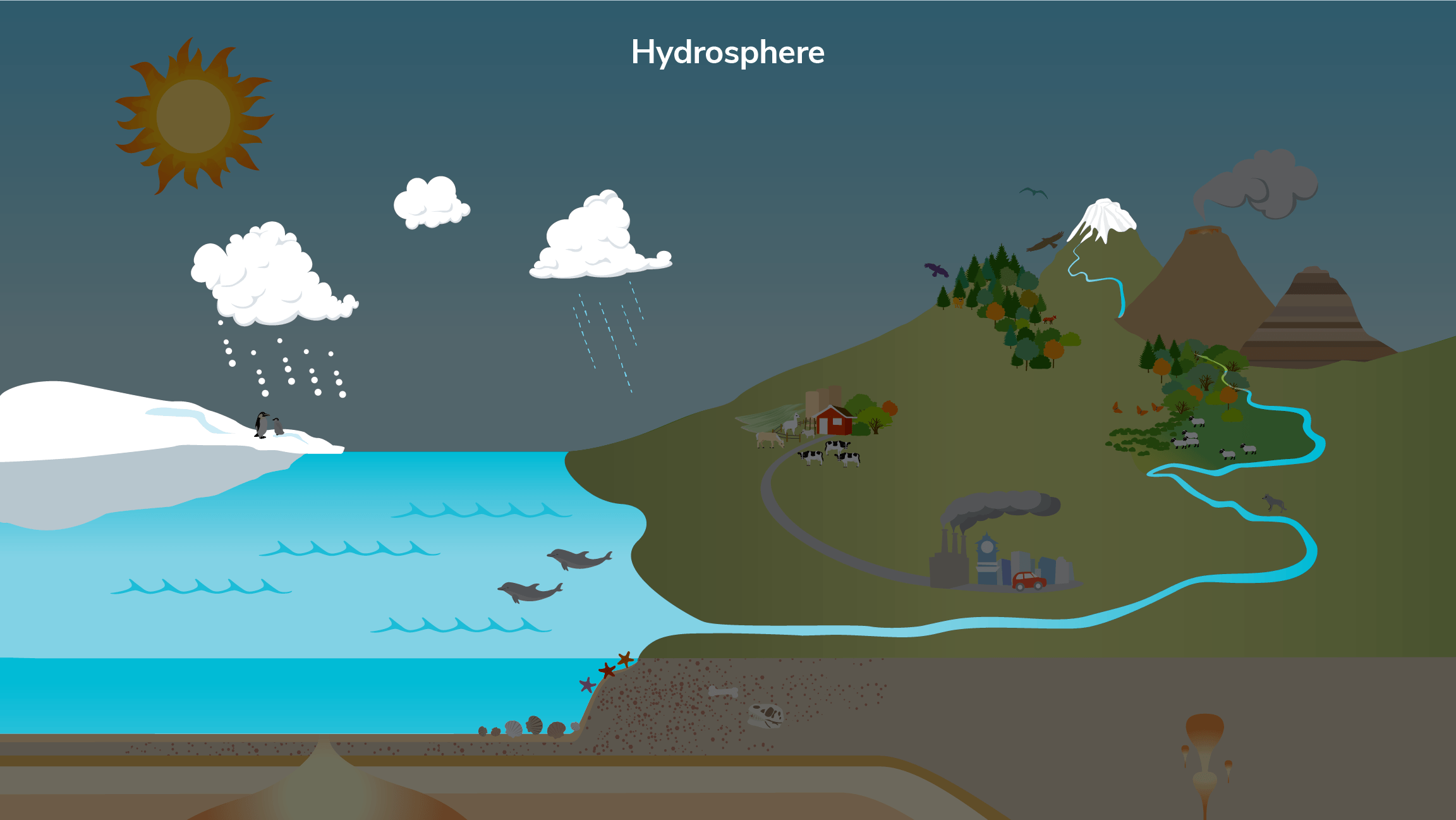
The geosphere includes all of the land on continents and under oceans, and the rocks, both solid and liquid, beneath our feet.
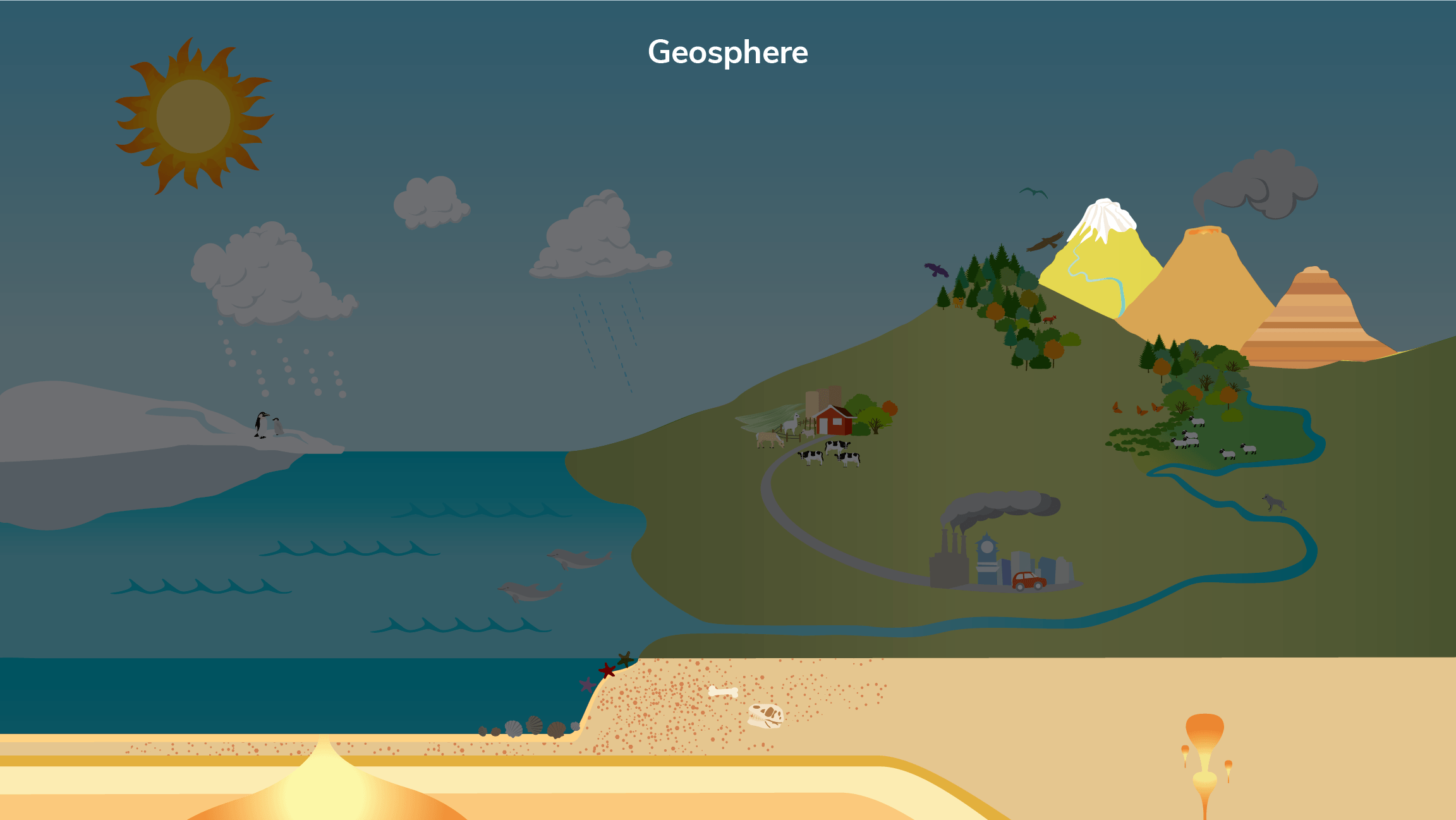
The fourth and final part of the Earth is the biosphere, which is all living things, including humans. Living organisms affect and are affected by the atmosphere, hydrosphere, and geosphere.
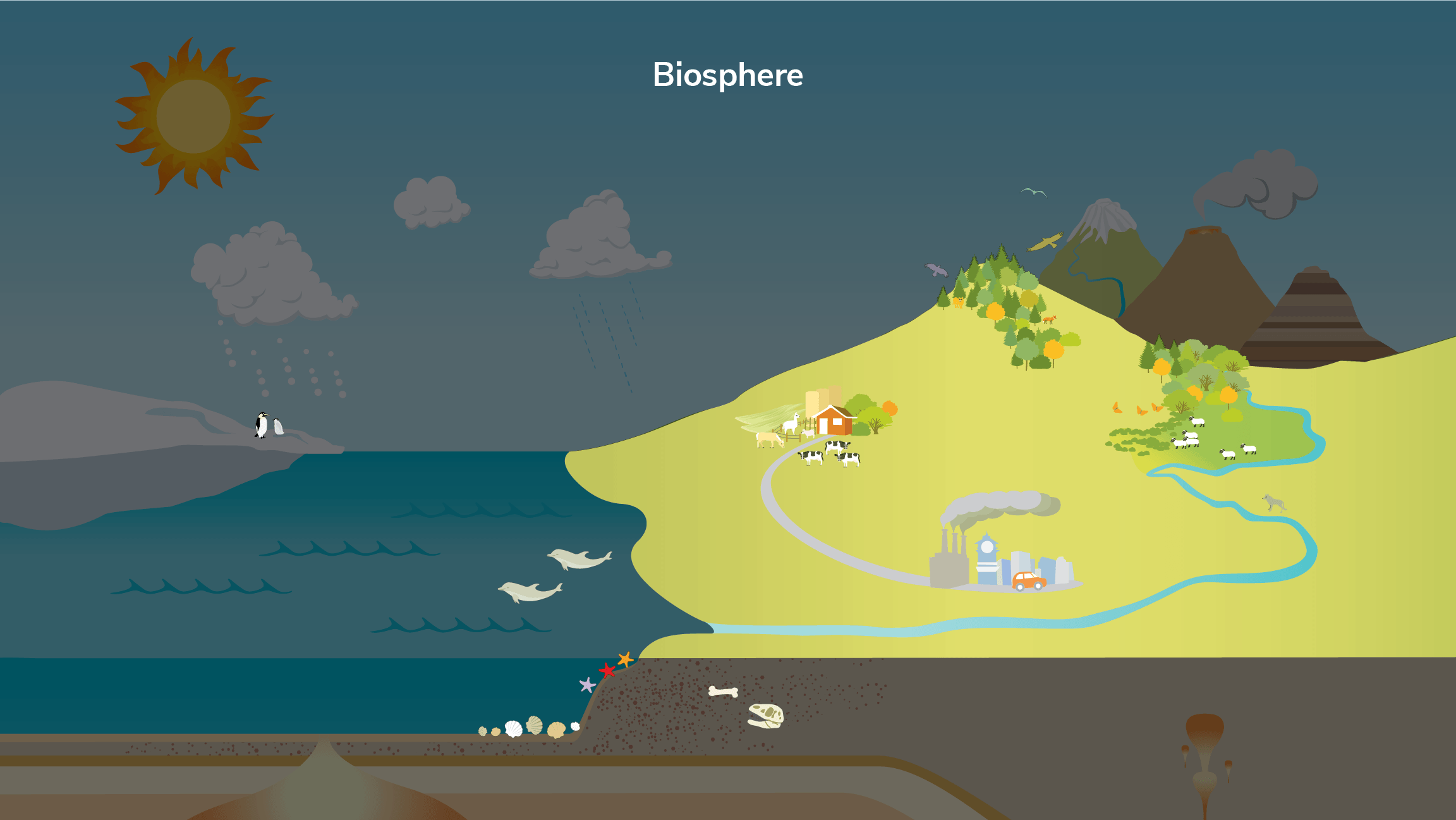
The Earth is a system of connected processes in the atmosphere, hydrosphere, geosphere, and biosphere that shape our world and how it changes through time. We begin our exploration of global change with the Earth system of connected processes. In the following slides we will add system processes to this diagram, which we hope will help you think about the cause and effect relationships among the parts of the Earth system.
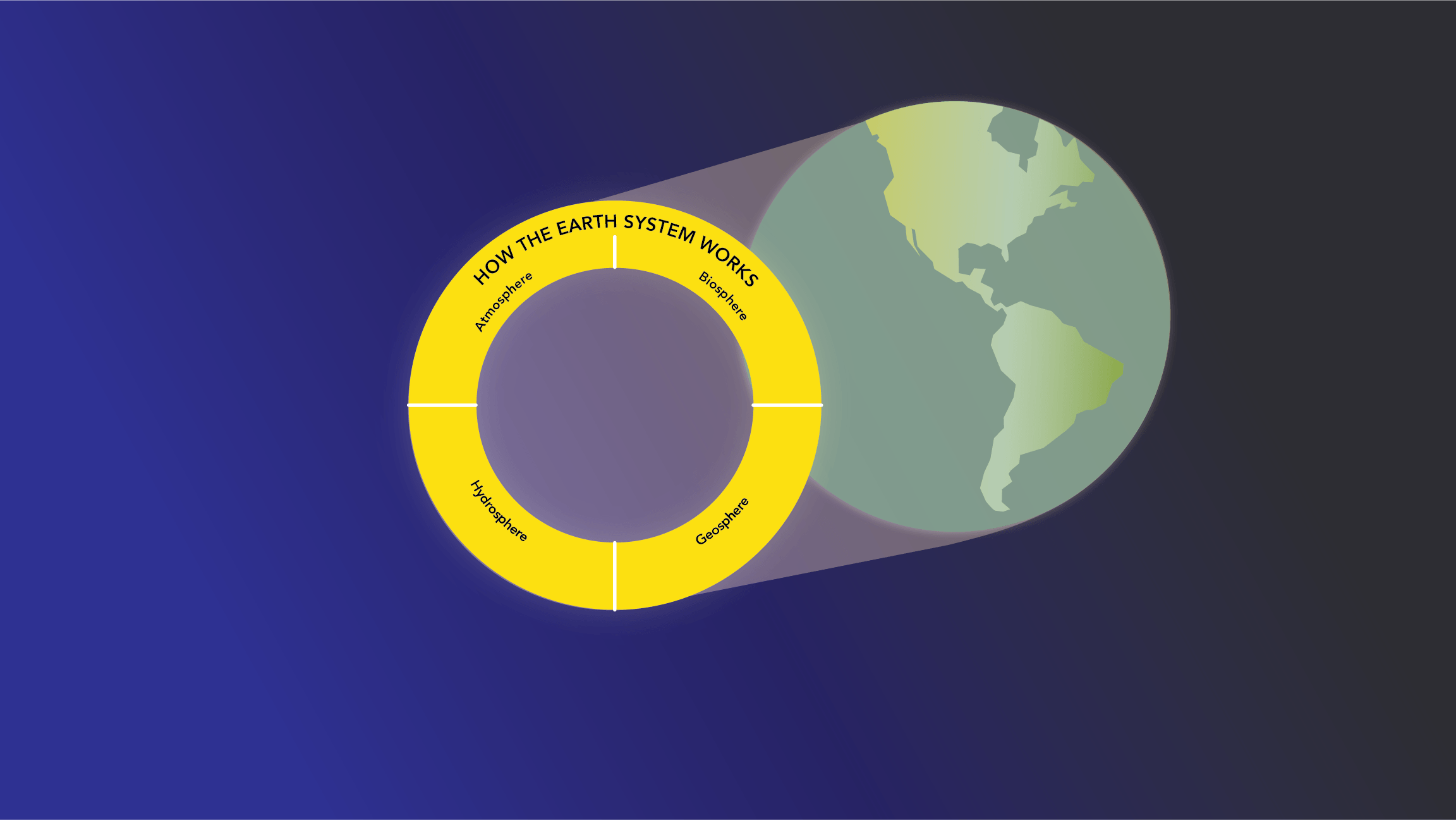
To understand how the Earth works, we first need to know about the sources of the energy for processes in the atmosphere, hydrosphere, geosphere, and biosphere. For understanding global change, the most important components of the Earth's energy budget are how much sunlight is absorbed and reflected, and how much heat is re-radiated. These primarily affect the atmosphere, hydrosphere, and biosphere. Additionally, Earth’s internal heat drives processes in the geosphere, but contributes very little energy to Earth’s climate and most ecosystems. Each of these four energy budget phenomena are represented as icons in the diagram below.
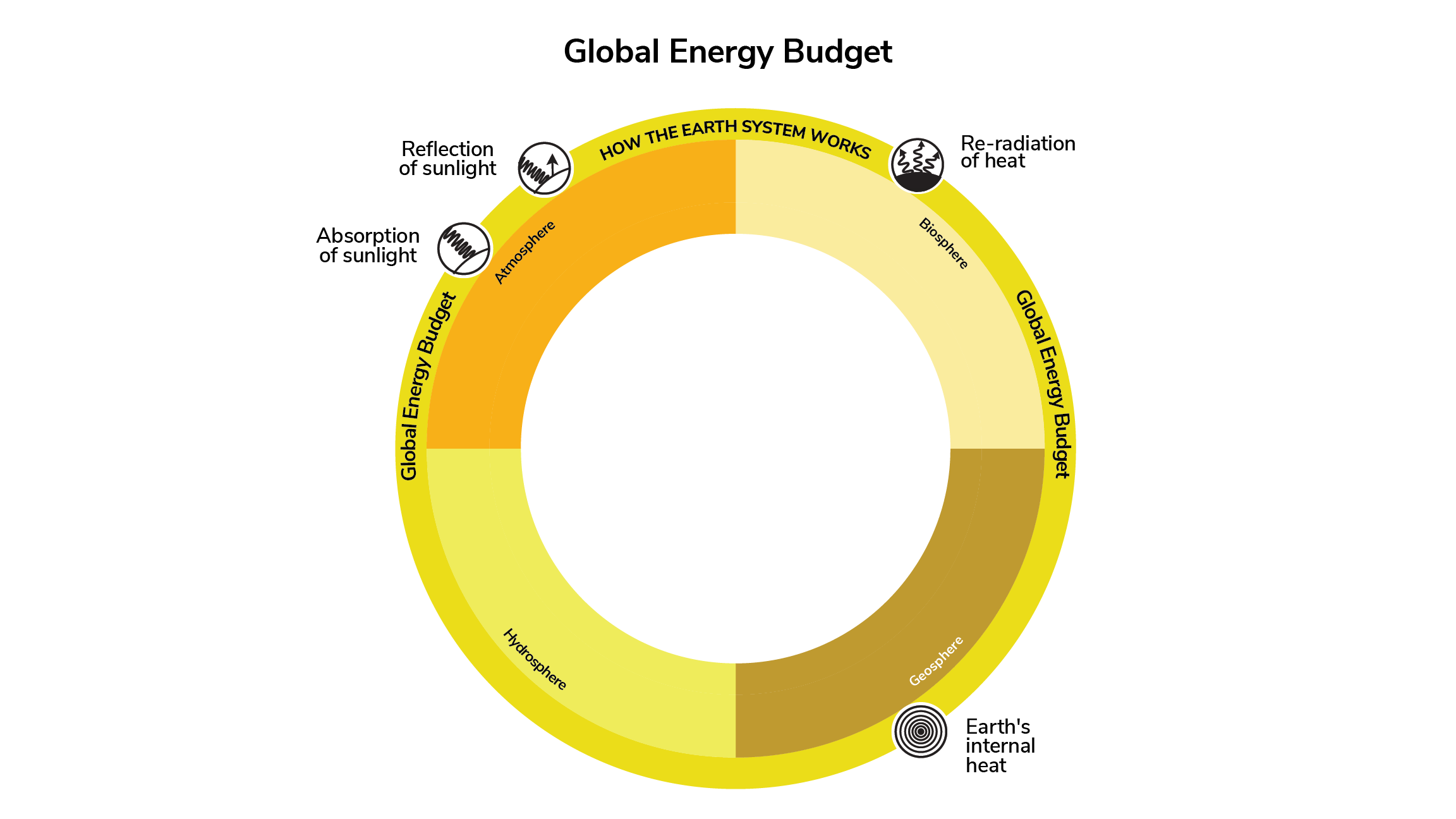
Thus, the Sun provides the Earth with most of its energy. Today, about 71% of the sunlight that reaches the Earth is absorbed and the rest is reflected back into space. Absorbed sunlight is then re-radiated by the Earth as longwave, infrared radiation, also known as heat, represented as red arrows. Sunlight and re-radiated heat are the energy sources that drive the processes in the atmosphere, hydrosphere, and biosphere. However, because the Earth is a sphere, more sunlight is absorbed per square area in the tropics than at the poles, thus it is heated unevenly. This is why it is warmer near the equator than at the poles.
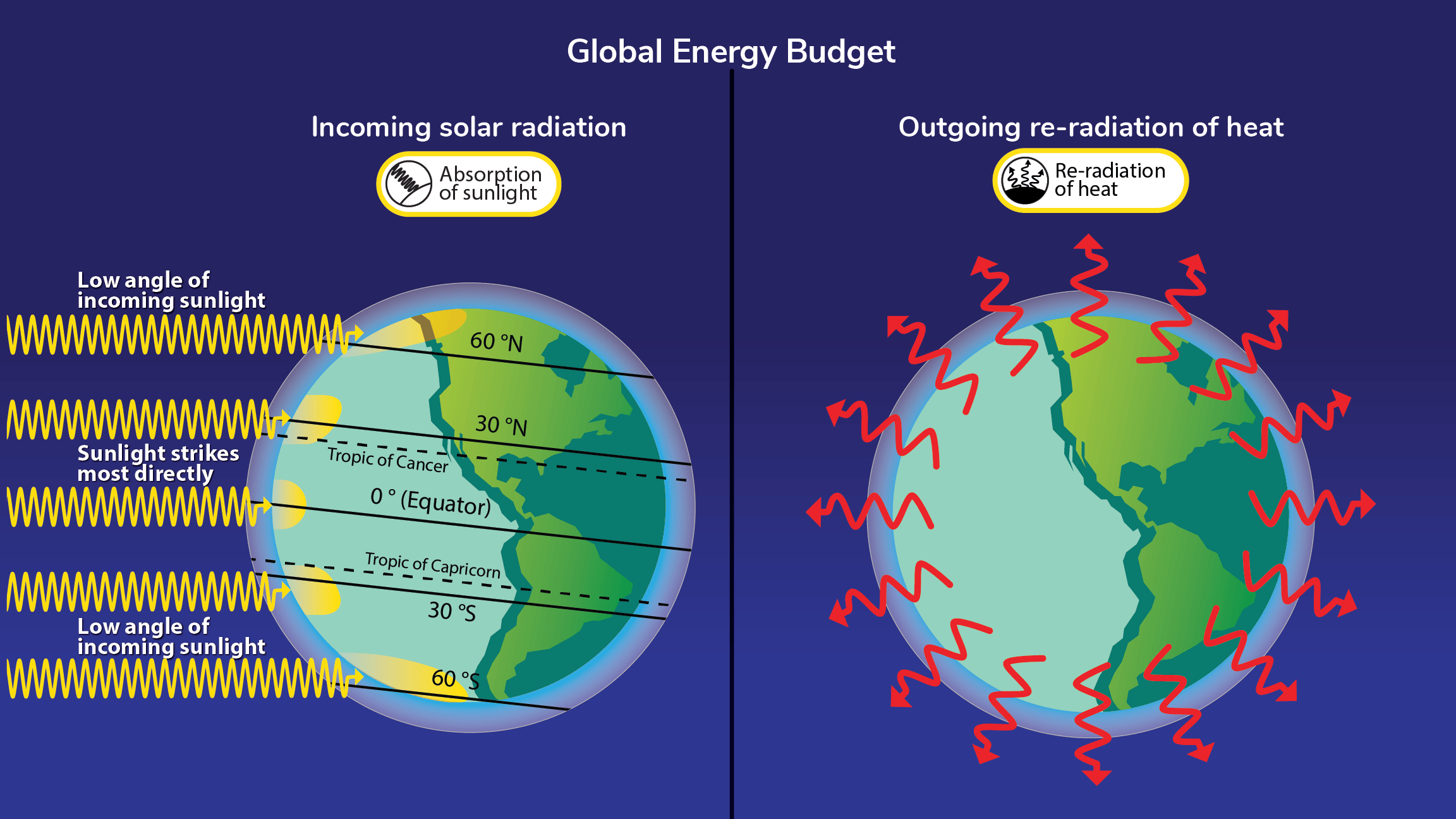
Earth’s internal heat is left over from when our planet formed and from radioactive decay of elements inside the Earth. While the Earth’s internal heat contributes very little energy directly to the processes that shape Earth’s climate, it is the energy source that drives processes like plate tectonics and parts of the rock cycle.
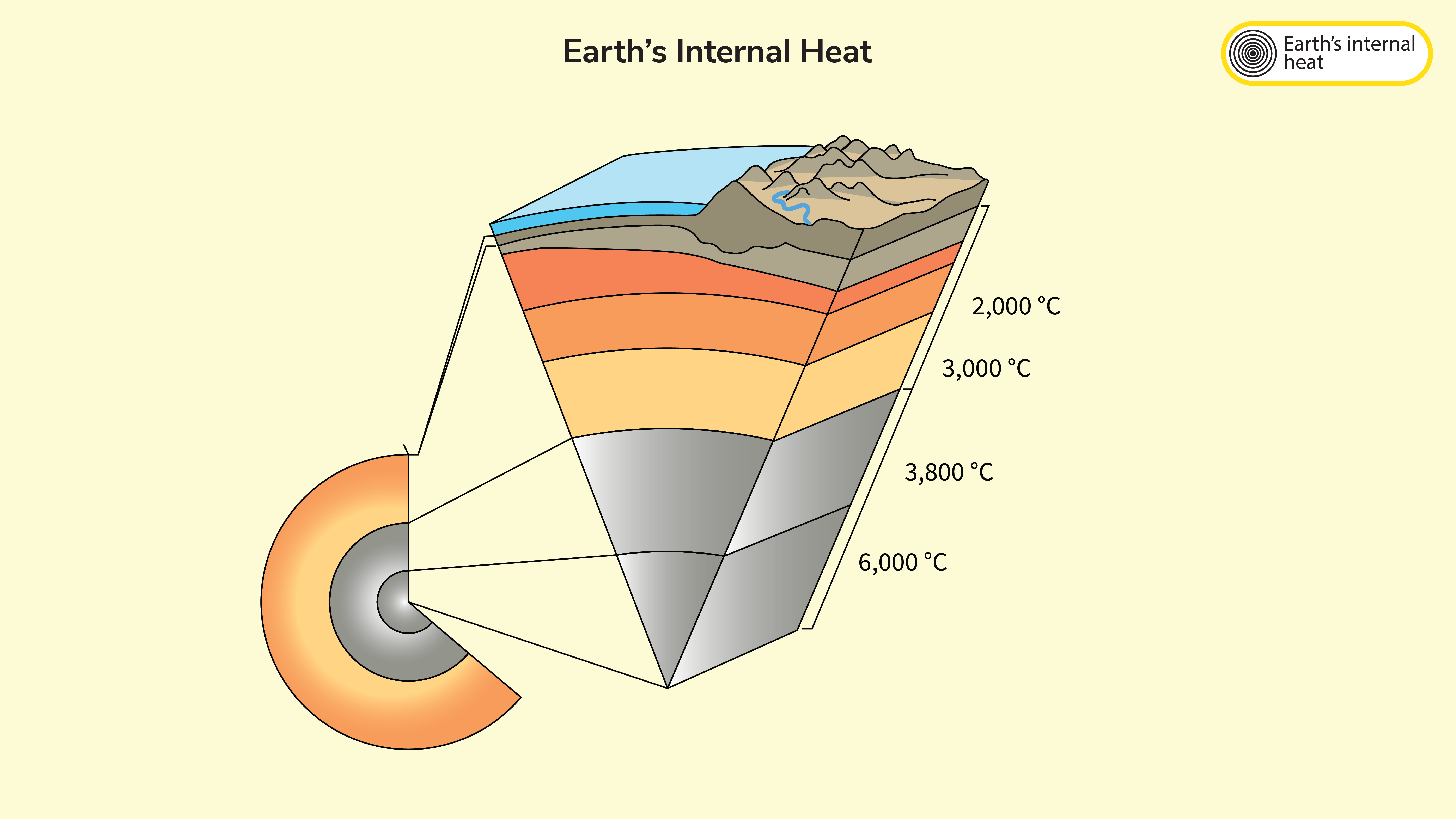
The global energy budget powers the fundamental processes that shape the world around us. To explain how the atmosphere and hydrosphere work, it is important to understand these four processes: the greenhouse effect, atmospheric circulation, ocean circulation, and the water cycle. Each of these processes will now be explained briefly.
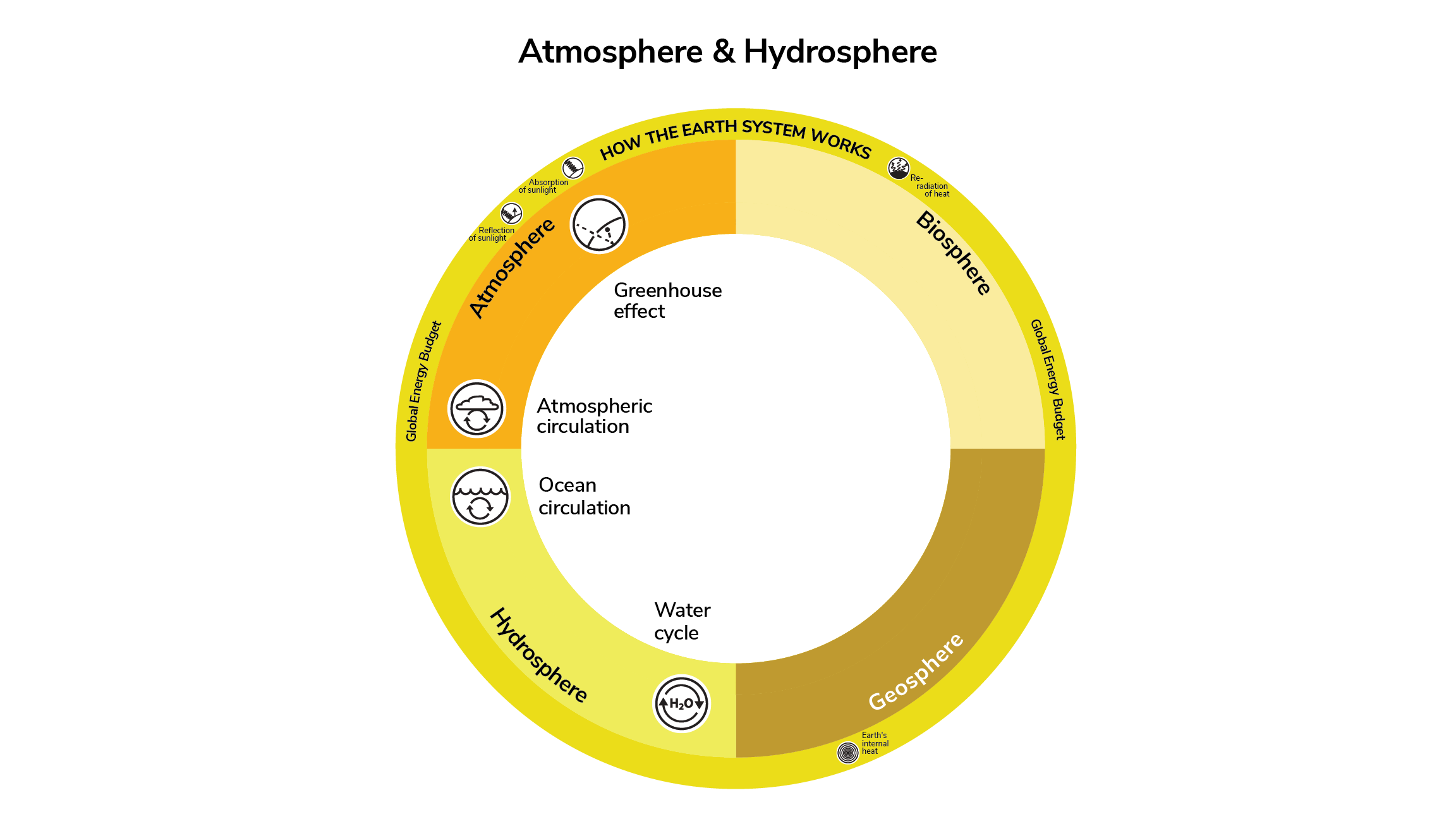
The greenhouse effect is a fundamental process in the atmosphere that affects the re-radiation of heat within the atmosphere. Sunlight absorbed by the Earth is re-radiated from Earth’s surface as heat, shown below as dark red longwave radiation arrows, as seen before. Most of this heat is then absorbed and re-radiated by greenhouse gases, impeding the loss of that heat from our atmosphere into space. This process is the greenhouse effect. Without the greenhouse effect, the Earth would be much colder, and all surface water would freeze. Conversely, increasing the amount greenhouse gases in the atmosphere increases Earth’s average temperature, affecting global climate and ecosystems.
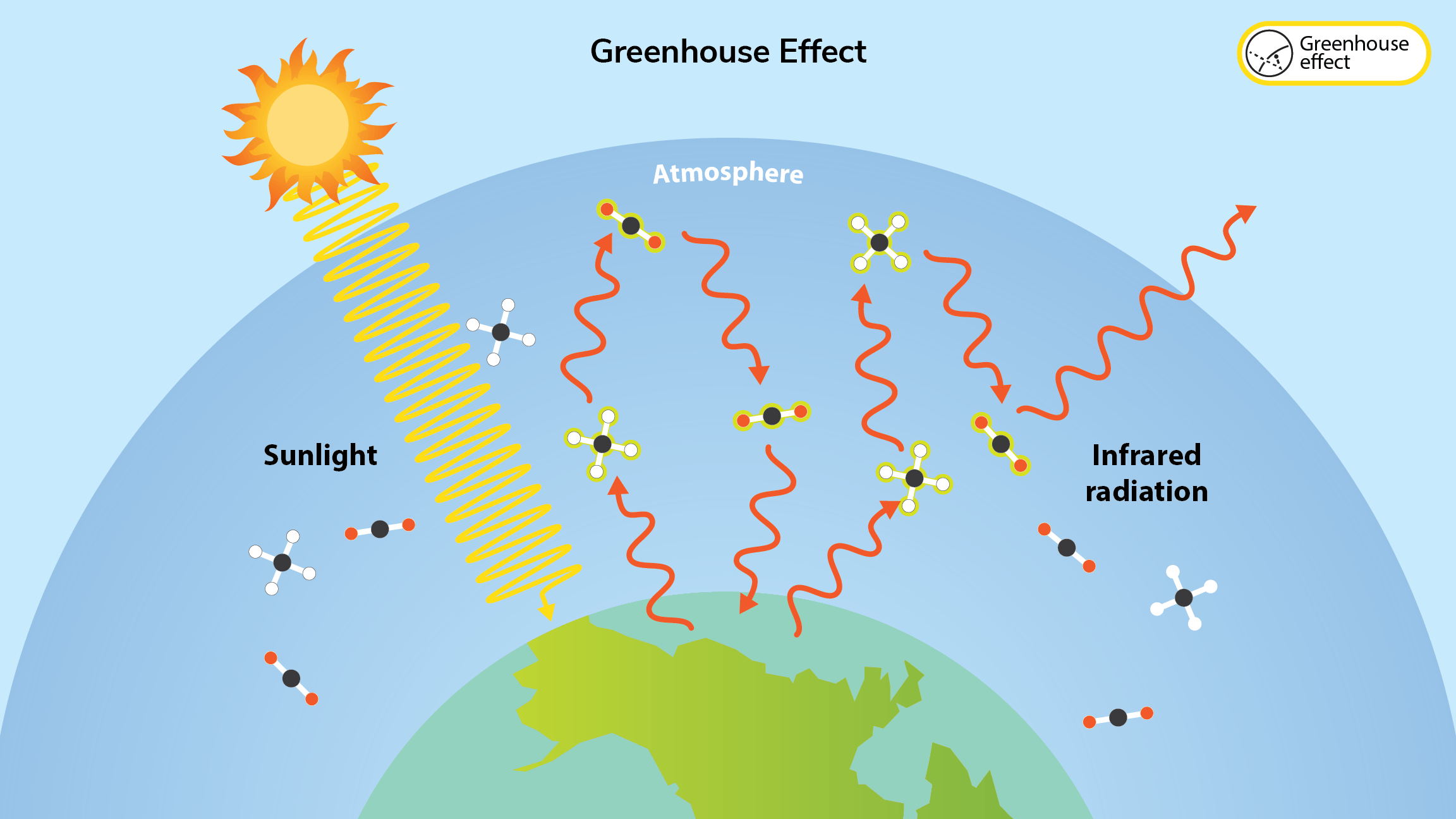
Atmospheric and ocean circulation influence each other. These processes are driven by the uneven heating of the Earth's surface by the Sun, and the Earth’s rotation. Atmospheric and ocean circulation are the two primary ways that heat is redistributed across the entire surface of the Earth, which in turn, brings us our daily weather and shapes regional climates. Increasing the Earth’s average temperature, for example, due to an increase in greenhouse gases, changes atmospheric and ocean circulation patterns, altering climate, and in turn, Earth’s ecosystems.
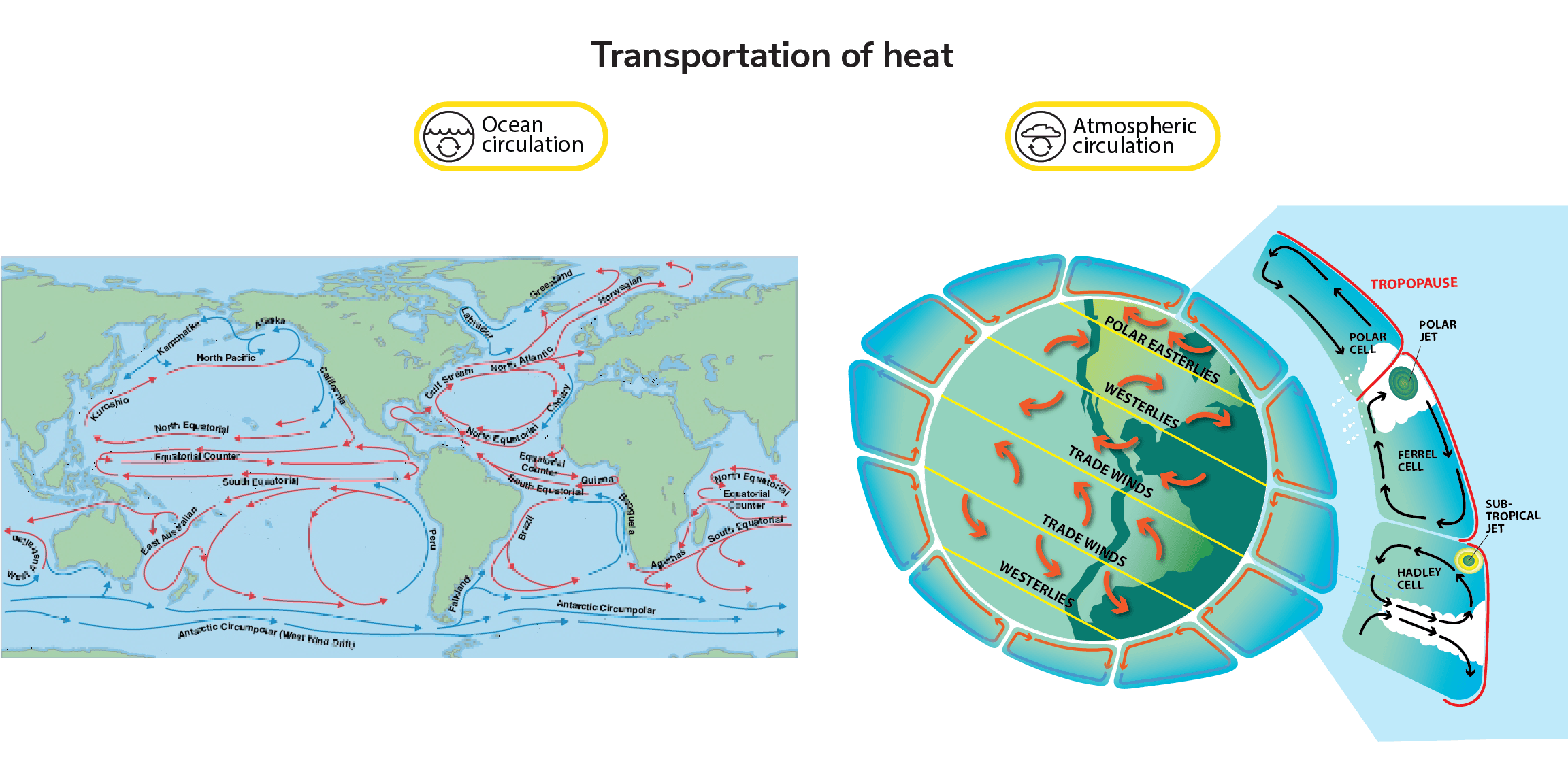
The water cycle, the movement of water through the Earth system, shapes the land, atmosphere, and biosphere. The cycling of water is important because water is essential for all living organisms, transports heat, and itself is a greenhouse gas.
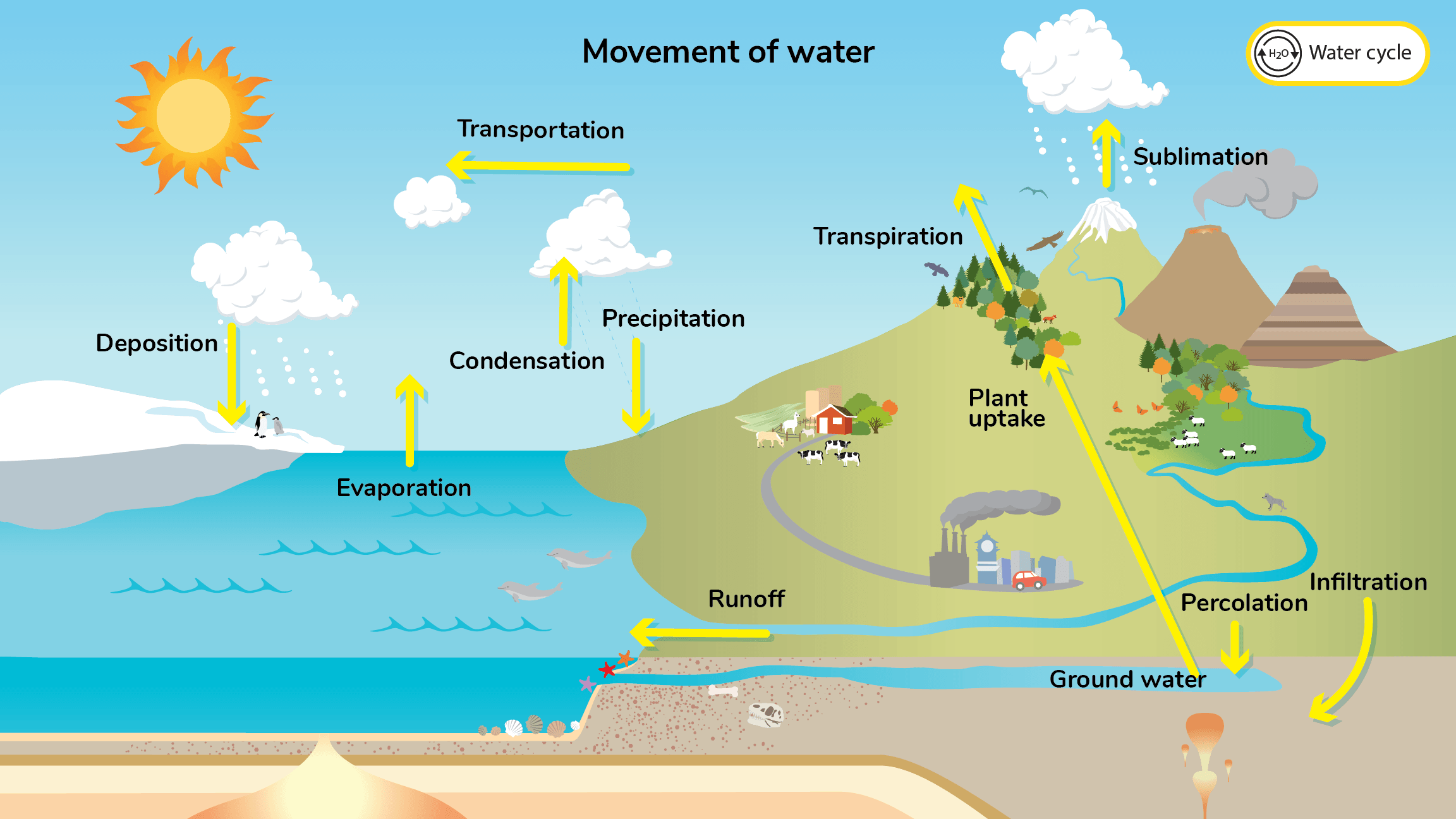
Having now summarized the key processes in the atmosphere and hydrosphere, we turn to the fundamental processes in the biosphere and geosphere. In the next two slides, we will briefly explain these processes.
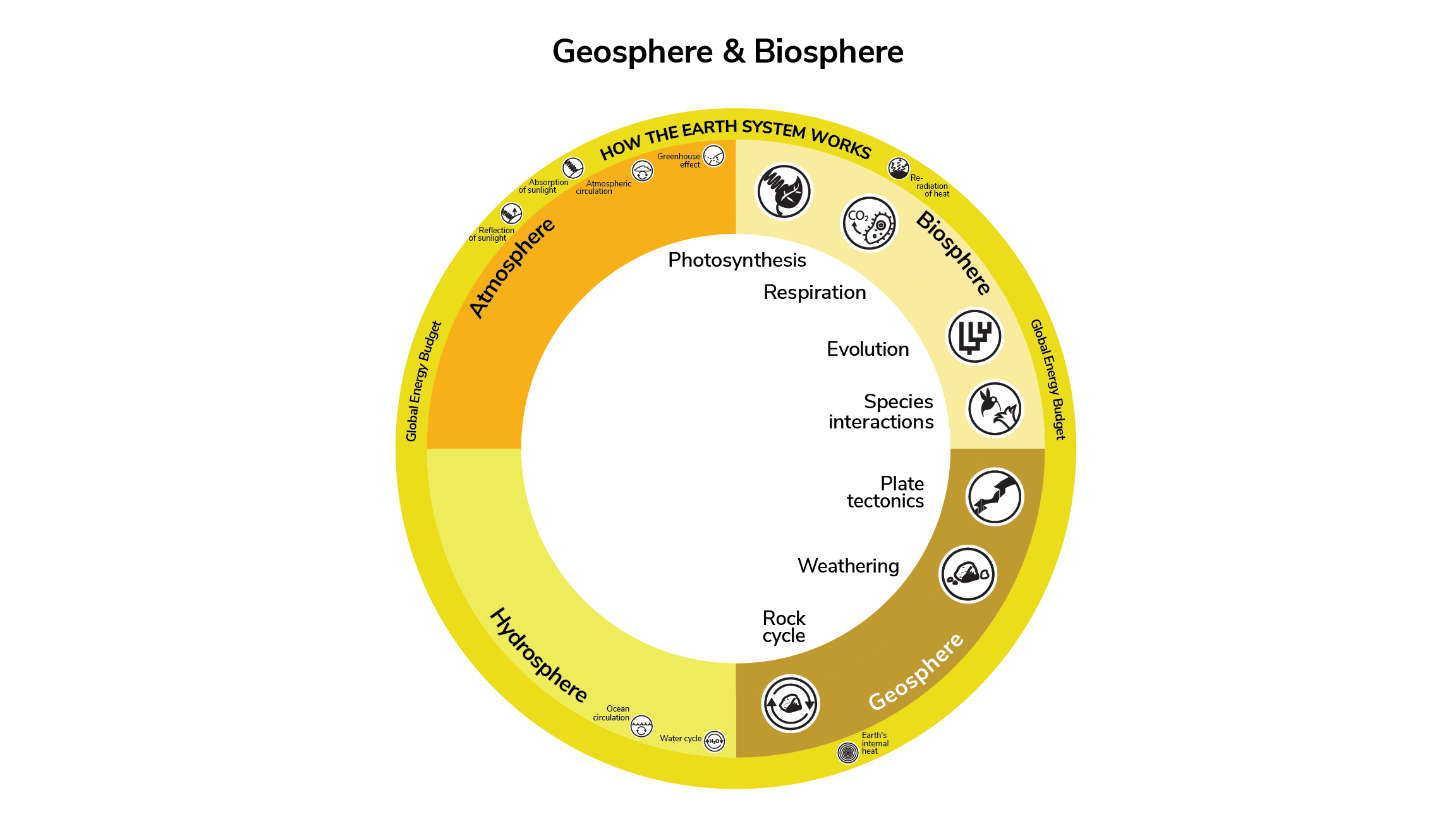
Plate tectonic processes and the rock cycle, which includes weathering, shape the Earth’s surface. Continents and oceans form and change over millions of years, influencing how ocean currents and air move, and how water cycles. Over millions of years, burial of carbon from living things and from the weathering of the Earth’s surface influence the amount of carbon dioxide, a greenhouse gas, in the atmosphere.
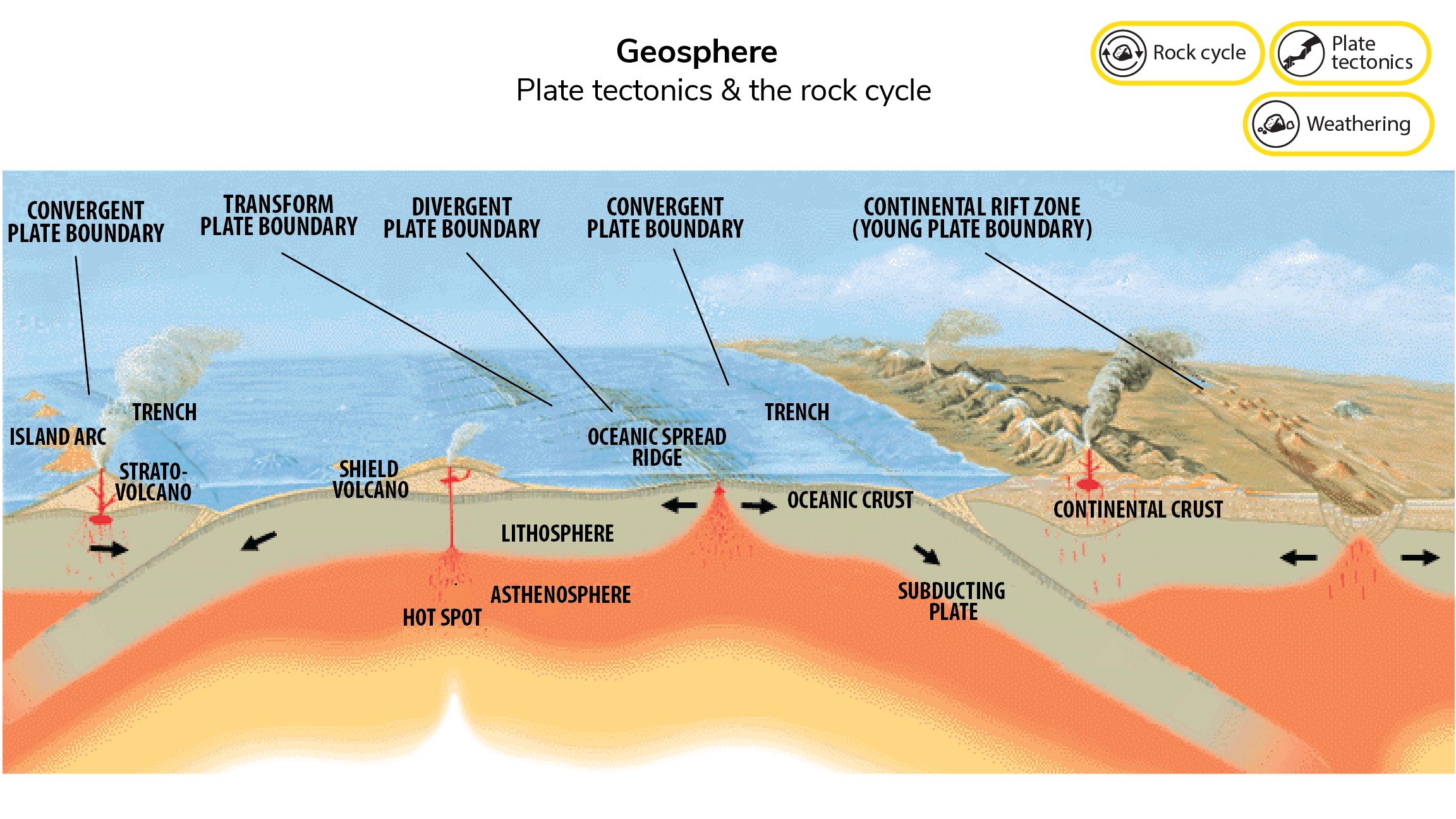
Evolution and species interactions profoundly affect the Earth system. For example, the evolution of photosynthesis dramatically increased oxygen levels in the atmosphere. Life has and continues to be shaped by evolutionary processes. Evolution is the change in characteristics of populations of organisms over time that are passed (inherited) from one generation to the next. Additionally, all species are affected by interactions with other living things, and these interactions influence the abundance, life cycles, and evolution of organisms. For example, in coral reefs, species compete for limited space, and various fish, starfish, and snails live in and feed on coral and algae.
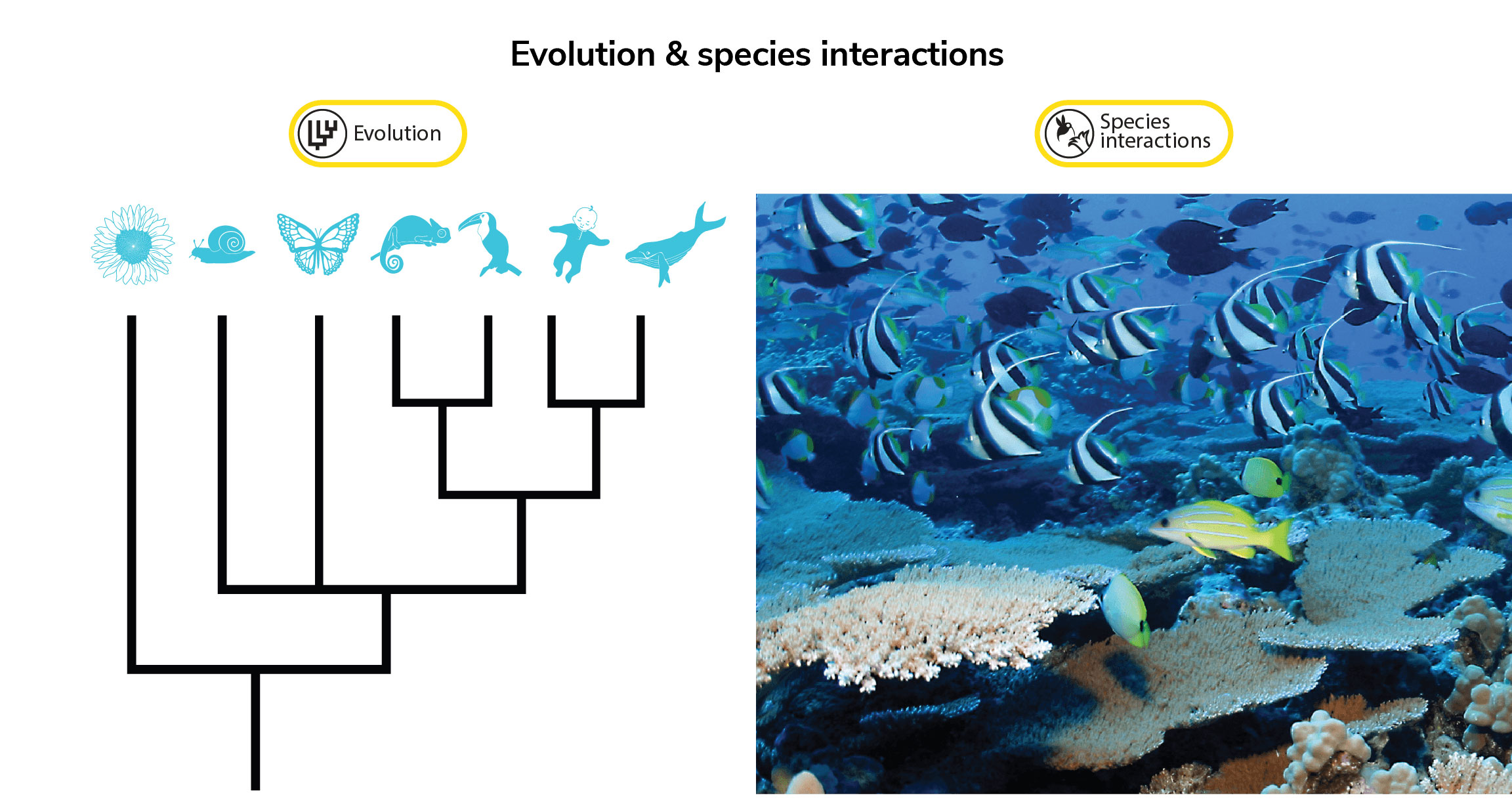
Fundamental to how the Earth works is the cycling of elements, such as carbon, nitrogen, and phosphorus, through the four spheres. For example, carbon, in the form of carbon dioxide, is captured from the atmosphere by photosynthesizing plants, and is released back to the atmosphere through processes such as respiration, decay, and from the burning of fossil fuels. Nitrogen and phosphorus are essential nutrients for life on Earth. For example, these elements are essential to components of proteins and genetic material (DNA, RNA).
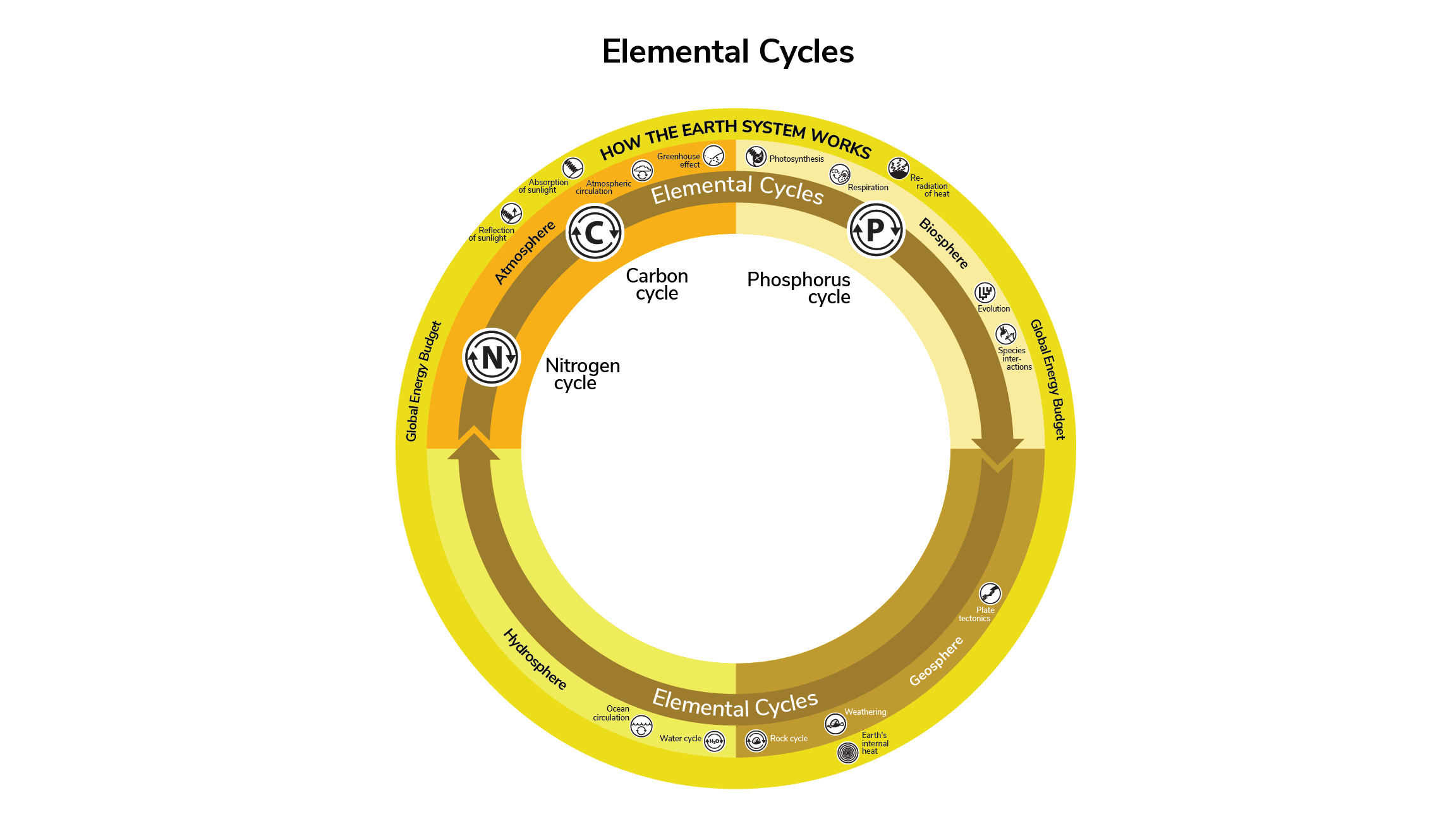
Elements cycle through the Earth system through various human and non-human processes. This diagram shows some parts of the carbon cycle, including some of the ways carbon dioxide moves among the four spheres. Human activities, such as the burning of fossil fuels from geologic reserves, deforestation, and agriculture, contribute carbon dioxide to the atmosphere. Carbon dioxide is also absorbed in a variety of ways, including by the ocean and photosynthesizing plants. However, these sinks do not remove all of the carbon dioxide released by human activities into the atmosphere. As a result, the amount of carbon dioxide in the atmosphere, a greenhouse gas, continues to grow, raising average global temperatures.
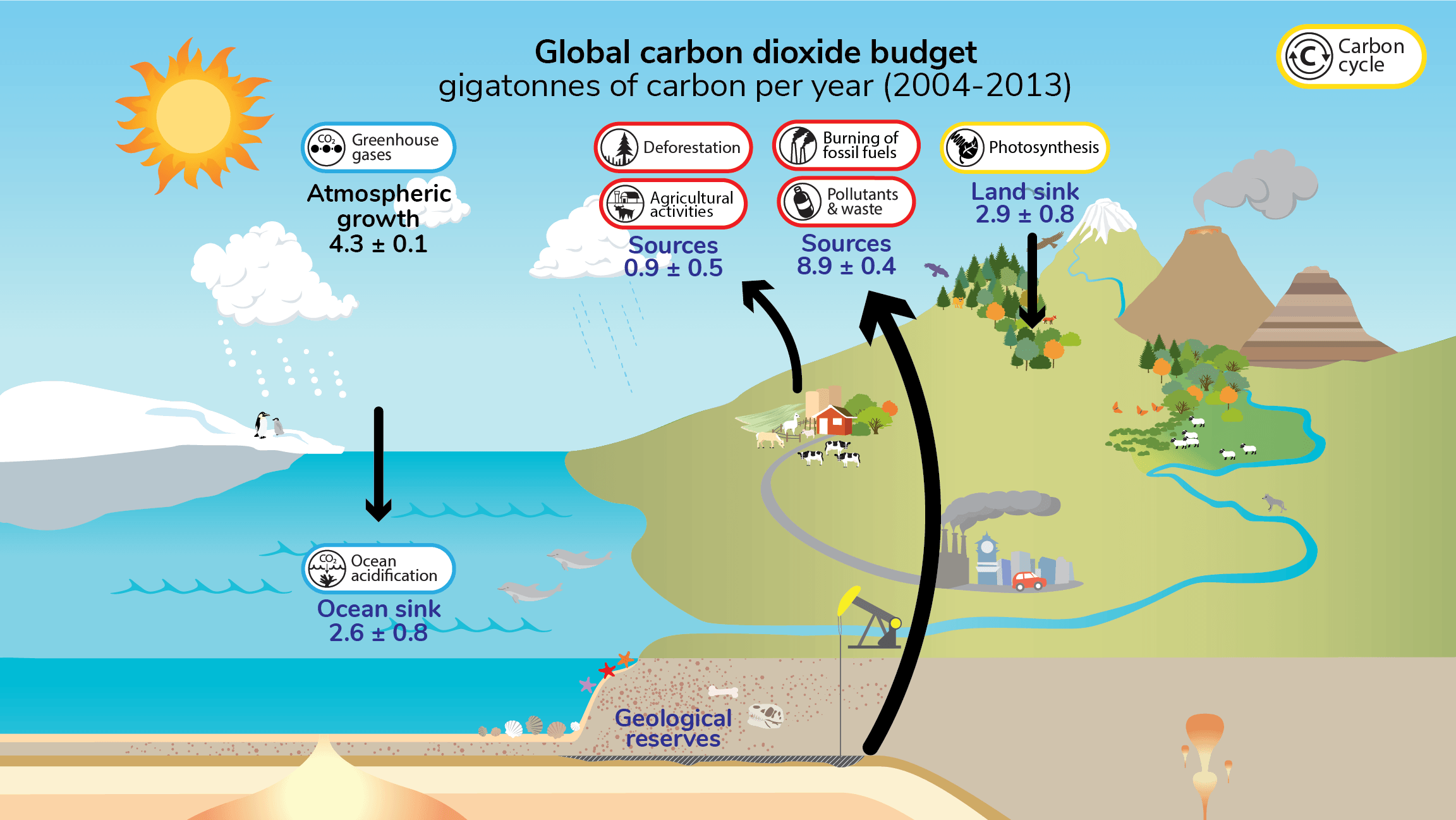
A major focus in the study of global change is explaining how climate and ecosystems change. Given the number of factors that influence climate and ecosystems, including all of the processes outlined in the previous slides, we have placed the terms climate and ecosystems in the innermost ring of How the Earth System Works.
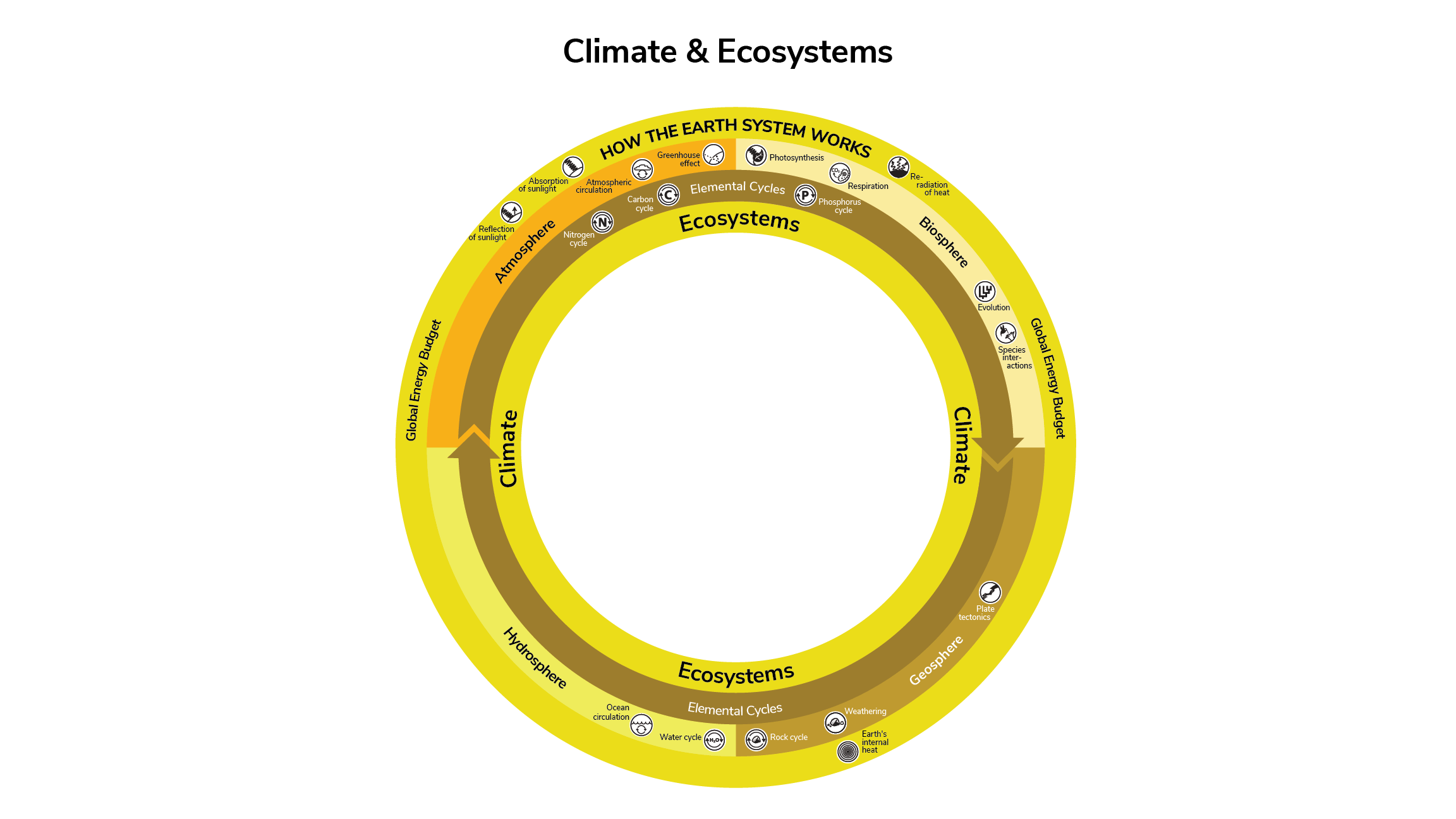
A region’s climate is defined by its average weather (including its seasonal variation in temperature, precipitation, wind, and clouds) over long periods of time (over decades, centuries, or millennia). Weather describes the short term variation (over hours, days, or weeks) in temperature, precipitation, wind, and clouds. Here, we show average annual precipitation, which is an important component of regional climates. In turn, annual precipitation is determined by the amount of sunlight received at different latitudes, as well as atmospheric and ocean circulation patterns.
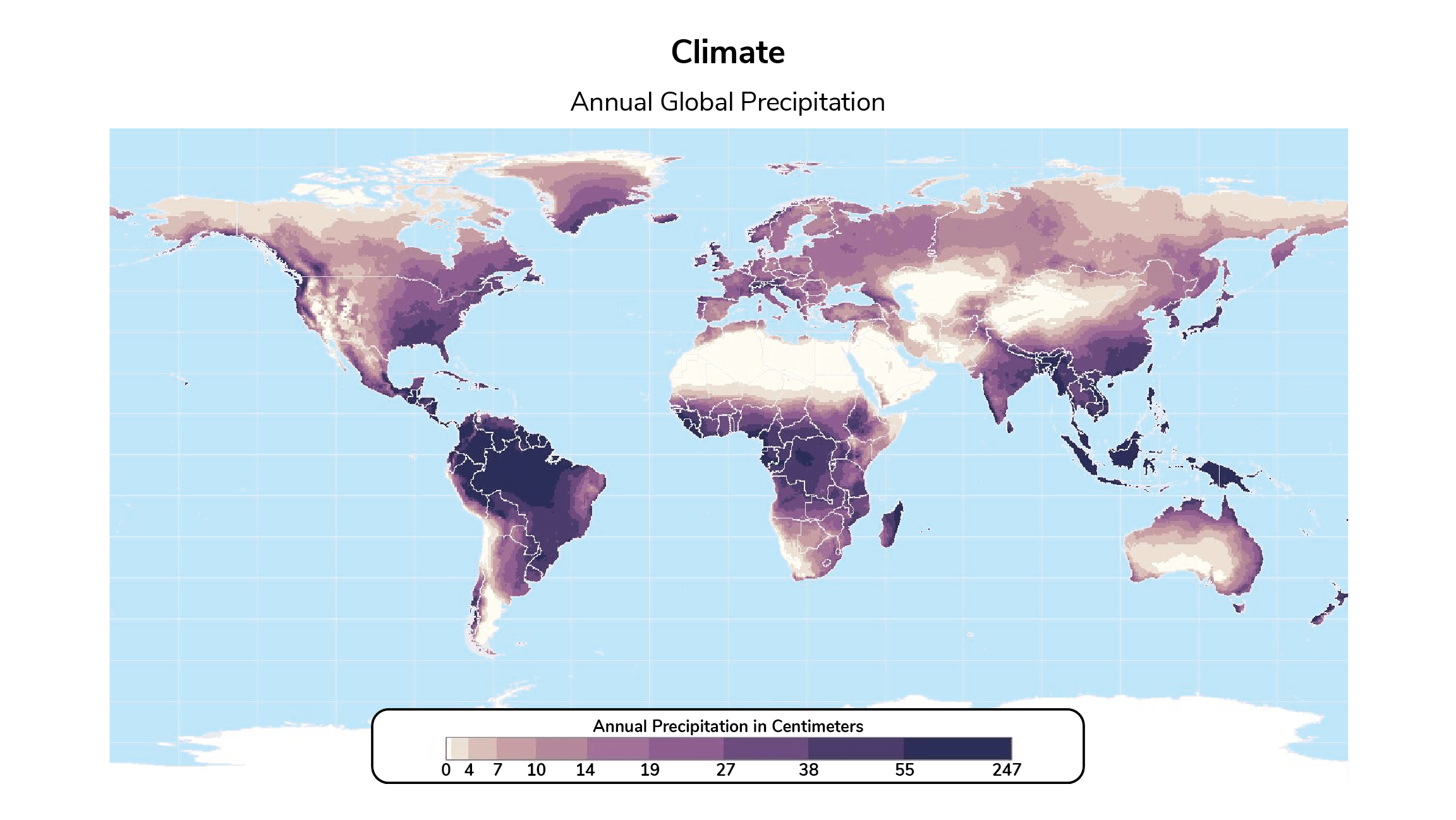
Biomes are broad geographic regions, either on land or in the ocean, where distinctive groups of species live. For example, the plants and animals found in tropical forests are different from the species found in deserts. The boundaries of biomes are largely defined by regional climates. Within biomes are ecosystems, communities of living organisms that interact with each other and the physical (abiotic) environment. Ecosystems are continuously affected by all the Earth system processes.
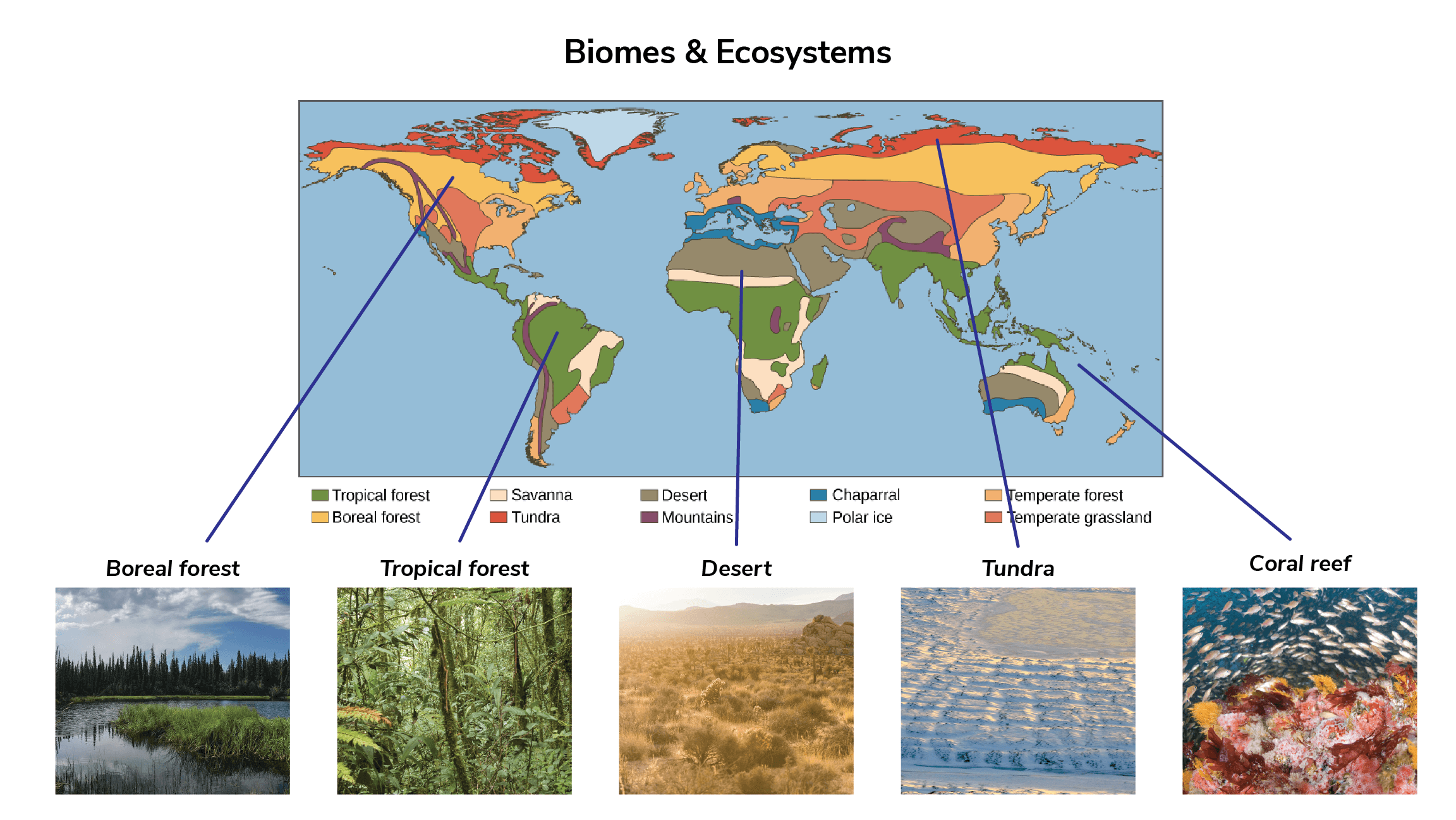
You have now been introduced to the processes that are essential to How the Earth System Works. To understand the Causes of Global Change, in Part 2 we will turn our attention to the non-human causes and human activities that influence the Earth system. We will then explore how we can measure the Earth system to determine how fast (rate) and how much (magnitude) the Earth is changing. To continue, go back to the Understanding Global Change 101 page and click on UGC 101 - Part 2.
